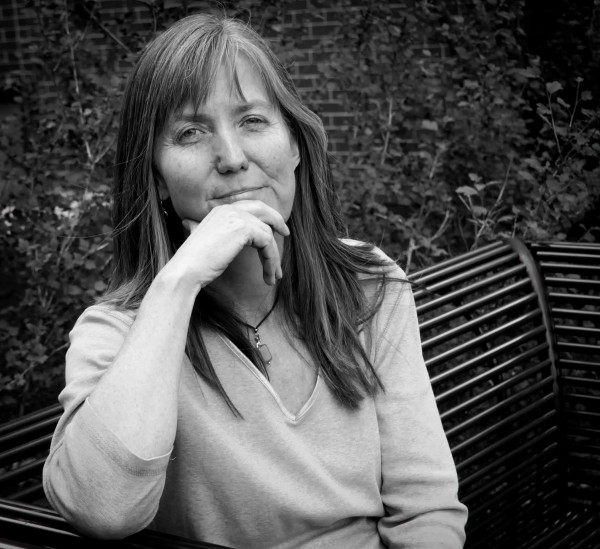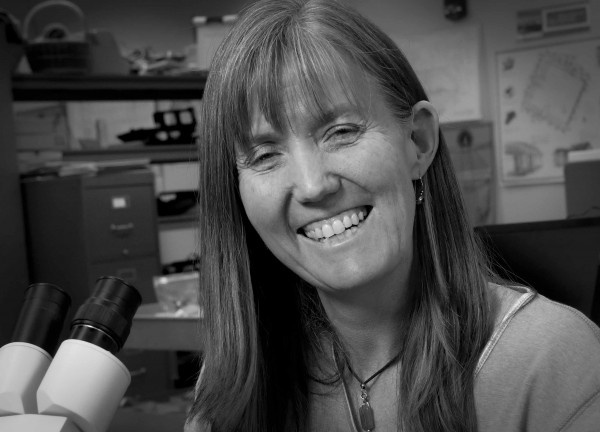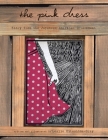Shikata ga nai
It appears there is nothing left of Amache except a small cemetery with gravestones and other memorials. The swirling wind doesn’t remember. The prairie grass twitches indifferently. The concrete barracks foundations are motionless.
But buried below this forlorn landscape are pieces of ceramic tea cups, Go game tokens, hair barrettes, eggshells, rounded stones from the nearby Arkansas River and residual pollen from plants grown on the site. For archaeologist Bonnie Clark, Ph.D., these are glimpses into the daily lives of the more than 7,000 Japanese Americans removed from California and forced to exist in southeast Colorado during World War II. Clues build stories, stories the internees have rarely shared.
After two summers of sifting shovelfuls of dirt, the story is unfolding. What has she discovered and what can we learn from the University of Denver’s Amache Research Project?
CLARK
The most amazing single discovery we made was in one of the vegetable gardens near a barracks. In the pollen samples we found pollen from Canna.
Canna is a relative of ginger and banana. In Hawaii people eat the root of the plant like Taro. And we found it at Amache. Where on earth anyone would have gotten Canna during World War II is completely beyond me. There is no way we could have found the pollen without the plant having been there. This got me thinking about the tie between Amache and Hawaii. The government did not intern the Japanese in Hawaii, even though that’s where Pearl Harbor happened, because the whole island would have shut down. They needed all those people. I suspect someone at Amache wrote to a friend or family member and had them send a little root.
These are the minute details we discover as we explore the routine of daily life. You get this texture that people who were there don’t write down because it doesn’t seem important. None of the accounts of Amache mention Canna, or how laundry was hung in the back, not the front yards. They didn’t think it was important to their story.
We begin to see the incredible effort it took to make this seem like home, to bring in things that allowed them that dignity. The Japanese have a phrase, “shikata ga nai,” which literally means “nothing can be done about it.” But what I hear them saying in that expression is, “You can uproot us and send us to the middle of nowhere but you are not going to destroy who we are.”
I find this incredibly inspiring. The evidence of this kind of ingenuity is something their descendents today are very proud of.
TRIBUTARY
And what about the eggshells?
CLARK
In front of many of the barracks we found evidence of small personal gardens, called entryway gardens. These are deeply rooted in Japanese culture. In one garden we found crushed egg shells that were sprinkled throughout. That’s not accidental. We’ve never found that in any of the other places we excavated on the site. So they are composting. And not everyone has access to eggs.
Someone who worked at the mess hall, or at the ranch where they raised chickens, was connected to one of the residents. Together they were turning trash into something valuable to make the garden beautiful.
This to me is a statement of human dignity. I can be in the mind of this person who was thinking, “I know how to make the earth a better place and I’m going to do it in this place, despite the fact that my country doesn’t think I have a right to be here. And I’m going to do it in this quiet, quiet way.”
I love moments like this. This is not a famous temple or a place of golden idols. This story is very subtle yet powerful at the same time.
What we have seen in these entryway gardens at the camp are little concrete ponds some of which held carp from the Arkansas River. They did not have access to koi. People also caught snapping turtles and put them in the ponds. They had graveled areas. They also transplanted wild plants. There is a real variety. It was an expressive space where people could change that military landscape where everything was exactly alike.
These discoveries also helped us understand their networks. In one garden they employed broken water pipe as planters. The trash from the camp was dumped outside the barbed wire fence. So this was somebody who knew somebody who was on the construction crew, or on the crew that picked up the trash.
TRIBUTARY
What else did you see at Amache that you didn’t expect?
CLARK
One of the things we found, and it’s still out there, is a mochi pounder.
This is an annual tradition during the Japanese New Year. They get together as a community and make mochi sweets, which brings good luck. I met a man who used the pounder to make mochi at the camp. It typically is a carved bowl but at Amache they made it out of concrete. You can still see on the outside the marks from the barrel staves. They poured the concrete into the bottom half of a barrel and then busted the barrel off.
During one of the internee reunions I met a woman who showed me her scrapbook with pictures of mochi pounding.
TRIBUTARY
How did the University of Denver (DU) get involved with Amache?
CLARK
My idea for the project was in line with DU’s history of outreach to Japanese Americans. The university has always been affiliated with the United Methodist Church although we are not a religious school. The Methodist church throughout its history had done a lot of outreach to the Japanese American community. During the war Caleb Gates, the Chancellor of DU, had written Colorado Governor Ralph Carr.
Gates was concerned that the talented, college-age kids, were behind this barbed wire and that they should be in college. So with Carr’s blessing DU recruited students at the camp and brought them to Denver. They could do that because they were a private university. So seeing these Japanese Americans get what might appear to be preferential treatment would not upset the taxpayers.
After Amache was dismantled (1945), the hospital building was brought to the campus and used as temporary housing for returning GIs.
When I came back to DU to start teaching I had read the report of the first systematic exploration of Amache that had been done by an archaeology firm working with a Denver Japanese American organization. I was just fascinated by what they said they were finding. It was just about to become a National Historic Landmark, which meant to me that more people would start visiting the site and potentially this would cause damage to what had yet to be fully explored. I wanted to get in on the ground floor as an archaeologist and start to protect the resources so they would be of value to everyone involved. I was very lucky in my timing.
TRIBUTARY
Before your explorations at the Granda Camp you had excavated the home of Amache and John Prowers in Boggsville, CO, for your masters thesis.
CLARK
It’s funny how a thread was established before I even thought of the Amache Project. Amache Ochinee Prowers’ father was a Cheyenne sub-chief and religious leader who was killed at the Sand Creek Massacre. She had married John Wesley Prowers (Prowers County is named after him), a cattle rancher. The mayor of Lamar suggested Amache as the name for the camp’s post office during the war since the town of Granada already had a post office.
It was certainly an apt name for the camp. Amache, especially after Sand Creek, was a woman caught between two worlds and one that she could never go back to. So here are these Japanese Americans sent out on the plains of Colorado having left a world then cannot go back to. So, I think it was a fitting tribute to her.
TRIBUTARY
Were there extensive effects of the internment on the prisoners, or were they so good at making the adjustment that it did not bother them?
CLARK
In the long run the effect was a great deal of loss. Most lost whatever they left back at home. They lost their property. Many of them destroyed any possessions that would link them to Japan. The whole experience was traumatic to the point that many of the internees never talked about it. Some of their children suggest the silence was in part because they didn’t want to poison them against the United States. They also decided to put it behind them and just move on. Shikata ga nai.
I have a friend whose parents were in camp and she knows almost nothing about Japanese culture and she blames that on internment. She feels, “We would have more connection to our own history, to our ethnicity, if that had not happened.”
These people were a very transnational, global community. Before the war, they would send their children back to Japan to be educated, to meet their grandparents, to do business, to learn Japanese culture. They were involved in international trade and the war cut all that off. It divided the Japanese Americans from the rest of the Japanese Diaspora.
The impact was not only economic but also psychological. The internment experience for many was degrading and shameful. This came out during the 1980s when a congressional commission investigated the reasons for the internment. They invited internees to testify about the camps and this accelerated the process of reclaiming this history. The government knew this was going to be traumatic so they brought in social workers to help them deal with the psychological effects of reliving the story.
So knowing this, the most important thing we do with our studies at Amache is provide a way for families and others who are connected to the survivors to reclaim that history and be able to start talking about it. We can take them to the barracks where their parents were, or take the young children to the place where they grew up.
Two summers ago while at the site I took a man born at the camp to the first place he ever lived but had never been back. He brought his kids and his grandkids and it was incredibly moving.
Two of my volunteers this summer were little girls in camp. Their parents didn’t talk about it but they will be out there reclaiming that history shovel full by shovel full. We’re bringing it back up and we’re having this conversation.
It’s a reminder that when people are feeling threatened that civil liberties are often the first thing to go. Fear and racism are a very, very dangerous mix.
People often think we are just treasure hunters. If that’s all we do then why can’t anyone just poke around and find treasures. We are as much anthropologists and historians as archaeologists. Archaeology is a way to draw people’s attention to a history or issues that they otherwise might not be interested in. So we get their attention with the artifacts, but then we get to talk about the civil liberties lessons of a place like Amache. And have a conversation about human dignity in the face of injustice.
I had always been interested in this issue of how do people live out their identities on a daily basis. And specifically how do they do that in times when their identities are under siege. So the day before Pearl Harbor these folks are a certain people and the day after Pearl Harbor, they wake up and they are the same person but all the politics around who they are have changed radically. At that moment, do you still serve rice in a porcelain bowl from Japan? Do you still drink sake? Do you still celebrate Obon?
What are those decisions that you make? The camp is a great place to explore these questions. And, very quickly, it became clear to me that this was a chance to do a really different kind of archaeology where we do the exploration in conversation with people who had experienced that past themselves, or whose families had experienced it.
When we find these little glimpses, these for me are the magic moments that bring history down to that level where we can all understand it, where we all have shared the experience. These are the windows that archaeology provides.
TRIBUTARY
Now that you have our attention, are there upcoming events that are open to the public, besides visiting the camp?
CLARK
On May 24 from 4 to 6 pm we will have a reception at the DU Museum of Anthropology Gallery (Sturm Hall, Room 102). This will open a new collaborative exhibit of objects from our research at the camp called Connecting the Pieces: Dialogues on the Amache Archaeology Collection. This will be open to the public May 21 through July 20 from 9 am to 4 pm weekdays.
DU is returning for four weeks of research at Amache this summer. On July 14, the last weekend, we will host an open house day at the camp. This will be from 9 am until 1 pm at the camp, and then from 1 pm until 5 pm at the Amache Museum in Granada. We will be showing some of the new things we find during survey and the excavation units will be open so people can tour that as well as the camp.
We want people to go and experience the camp as a lived space. If you come across anything, you should feel free to take a look, but please put it back where you found it. We only take things that are better understood with further research or are effective for exhibits. Most of what we find we catalog where we find it and put it back. This is a new philosophy for archaeologists. We think it is the most respectful way to treat such a site.
By the way, there is a lovely children’s book now called “The Pink Dress.” Leslie Kitashima-Gray, the daughter of one of the internees at Amache wrote it. It is her mother’s story of her 9th grade graduation at Amache.
DONATIONS
Please consider a tax-deductible donation to the Friends of Amache to help with preservation efforts. Funds help maintain the site, create educational materials and assist other Amache-related preservation groups. Send to: PO Box 1234, Denver, CO 80202.
___________
Barracks Home This is our barracks, squatting on the ground,Tar papered shacks, partitioned into rooms
By sheetrock walls, transmitting every sound
Of neighbor’s gossip or the sweep of brooms.
The open door welcomes the refugees,
And now at least there is no need to roam
Afar: here space enlarges memories
Beyond the bounds of camp and this new home.
The floor is carpeted with dust, wind-borne
Dry alkalai, patterned with insect feet,
What peace can such a place as this impart?
We can but sense, bewildered and forlorn,
That time, disrupted by the war from neat
Routines, must now adjust within the heart.
— Tojo Suyemoto Kawakami
____________
Photos of Amache and May 21, 2011 pilgrimage to Amache Japanese concentration camp in Granada, Colorado, sponsored by the Japanese Association of Colorado, The Friends of Amache and The Amache Club.RELATED LINKS
Colorado State Archives on Camp Amache
Testimonies of Japanese incarcerated at U.S. camps
Photos of various Japanese internment camps
SUPPORTING TRIBUTARY
- Word of mouth is our most reliable resource. Please let others know about Tributary and why you appreciate the effort.
- Updates by email. This simplifies the notification effort for us and tells us you like our work. No fees. Total privacy.
- Please use the Share Your Thoughts section to add your thoughts on this story. We enjoy the conversation.
- And, use our Facebook page to give us a story idea. Share your comments too. Let your friends know about Tributary.
- Tell us your story privately, or suggest someone with an interesting story, via email at [email protected].
To be a person is to have a story to tell. – Isak Dinesen.




